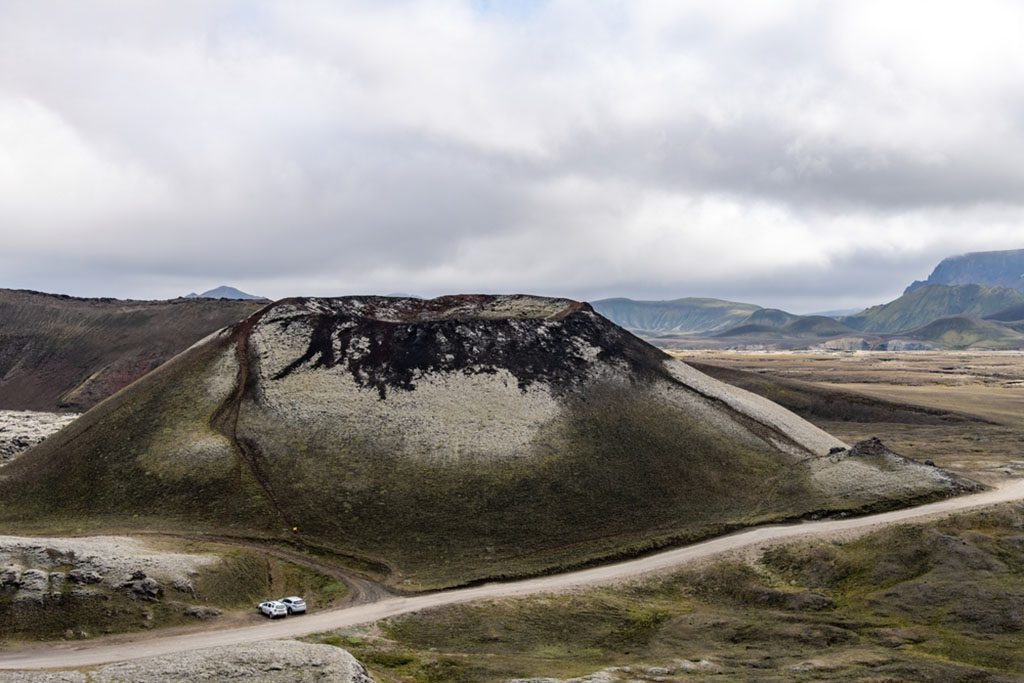Iceland, a nation in the North Atlantic, is known for its stunning natural beauty and high geological and volcanic activity. The island is home to over 30 active volcanoes due to its location on the Mid-Atlantic Ridge. These may be found amidst expansive lava fields, concealed by snowy glaciers, or tucked away in the midst of rugged mountains.
It is a pleasure to travel around the nation and take in the spectacular sights. Some of the world’s most impressive stratovolcanoes are located in this area, and they’re typically surrounded by geysers and steaming hot springs. The diverse volcanic landscapes of Iceland, which are home to roughly 130 volcanoes in total, are among the most fascinating in the nation and draw in thousands of visitors every year.
10. Krafla
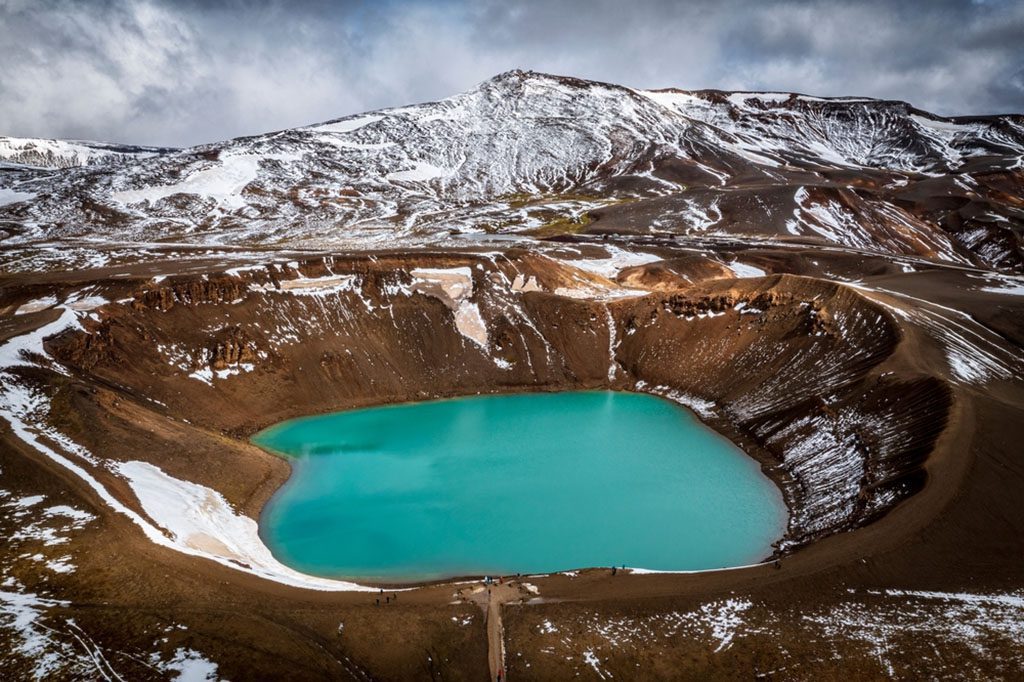
A breathtaking view of the Krafla active volcanic caldera near Myvatn Lake in North Iceland. Image source: Daniel Turbasa/Shutterstock.com
Krafla is a beautiful caldera in the island’s north, surrounded by bubbling hot springs, scalding mud pools, and hissing vents. Despite its frequent and intense geothermal activity, its crater is home to a cold-water lake that is famous for its beautiful emerald-blue color.
Although Krafla is just 818 meters tall, its alien look makes it a must-see. A lot of people go there since it’s close to the Myvatn Nature Baths.
9. Prestahnukur
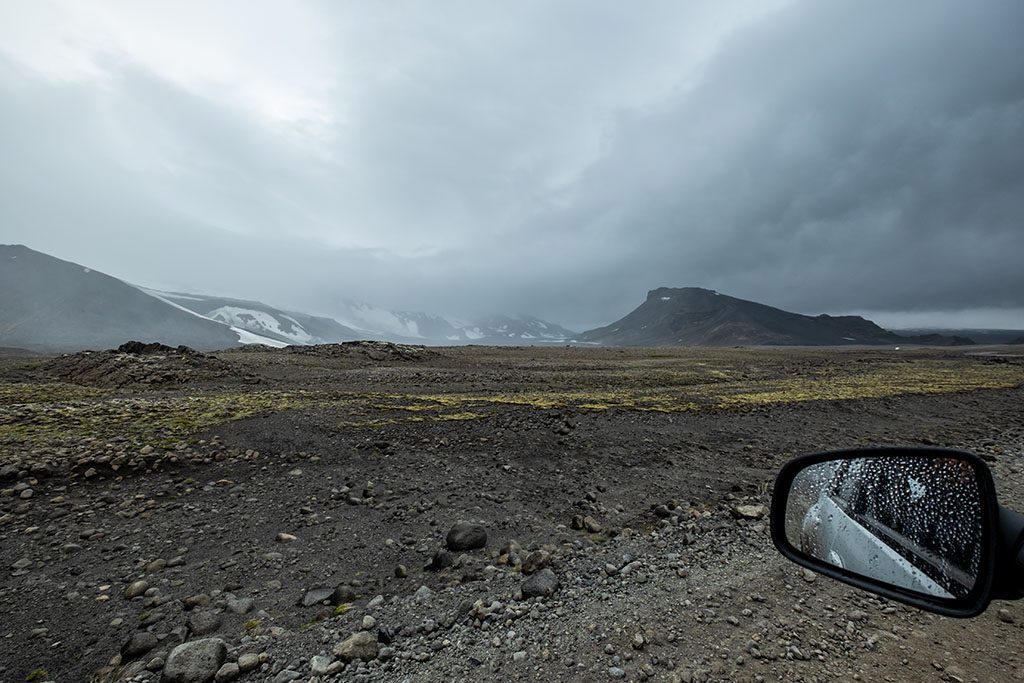
On the gravel road to Langjökull area and Geitland, Iceland. Image source: Farbzauber/Shutterstock.com
Prestahnkur, a massive structure in the Icelandic Highlands, towers above the surrounding area, which is otherwise dull, flat, and devoid of life. After millennia of lava flows and ash explosions, the volcanic desert in the area surrounding the volcano has taken on a gloomy, foreboding appearance.
Prestahnkur, with its bare, rocky landscape and its 1,220 meter summit, has an ominous air. Many people used to think spirits lived there. The Icelandic name for this enigmatic peak means “peak of the priests,” after the two religious men who first investigated it and discovered nothing out of the ordinary.
Despite the debunking of these sagas and folktales, a trip to the mysterious Prestahnkur with its eerie isolation is certain to leave an impression.
8. Snaefellsjokull
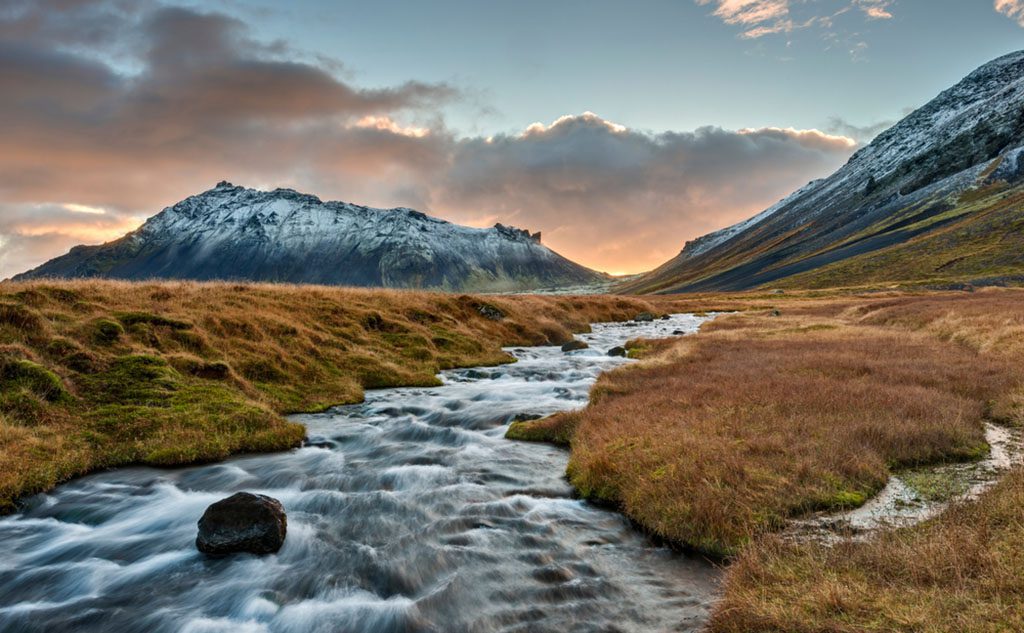
The Snaefellsjokull Peninsula with the Snaefellsjokull Volcano looming large. Image source: Ryan C Slimak/Shutterstock.com
Snaefellsjokull, a glacier that sits atop the Snaefellsnes Peninsula and overlooks the frigid seas below, is one of the most photographed places in all of Iceland. Glaciers glisten on top of the old stratovolcano, which was formed several hundred thousand years ago and now displays its characteristic crumbling cones, jagged craters, and lava-scarred terrain.
Snaefellsjokull, which stands at an impressive 1,446 meters, is not only a stunning natural landmark, but also an important cultural landmark, having been mentioned in several Icelandic sagas and works of literature. Among them, Journey to the Center of the Earth by Jules Vernes is by far the most well-known.
Snaefellsjokull is one of Iceland’s most famous landmarks, and it can be found inside the beautiful Snaefellsnes National Park in the country’s far west.
7. Hverfjall
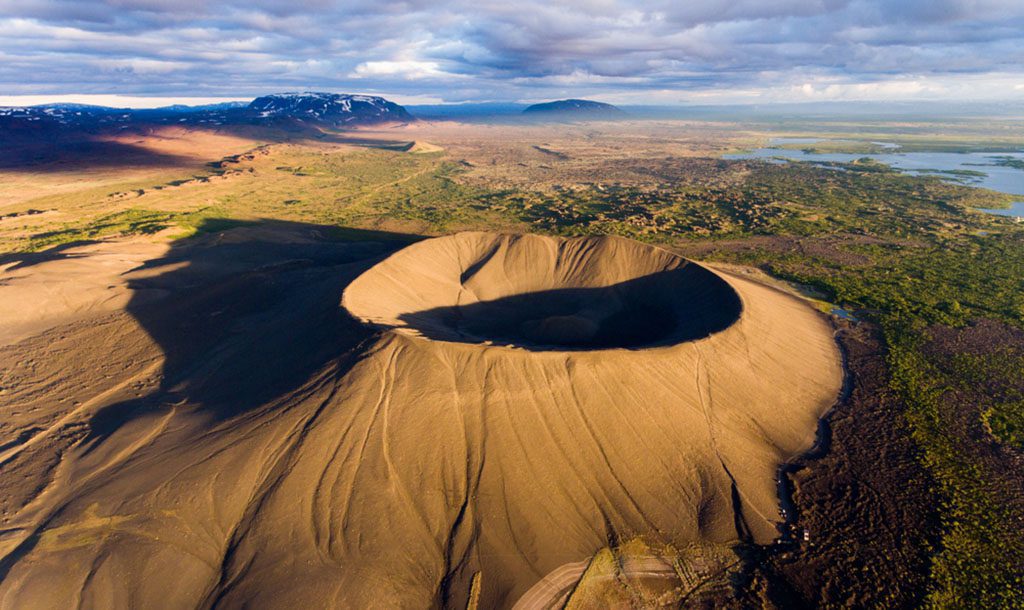
An aerial view of Hverfjall crater in Iceland. Image source: worldclassphoto/Shutterstock.com
This little extinct volcano is one of the most visited sites in all of northern Iceland, and its name may be pronounced either way: Hverfell or Hverfjall. This is because it is easily accessible, not far from the Ring Road, and worth the effort.
The tephra cone rises 420 meters above the surrounding landscape, and a leisurely stroll around its 1-kilometer rim takes no more than an hour. Hverfjall is a decrepit, round volcano in the middle of a barren, bleak terrain that seems like it may have been plucked straight from the moon. Visits to the neighboring stocky tuff ring volcano are common, as are trips to the nearby Myvath, a tiny lake.
6. Öræfajökull
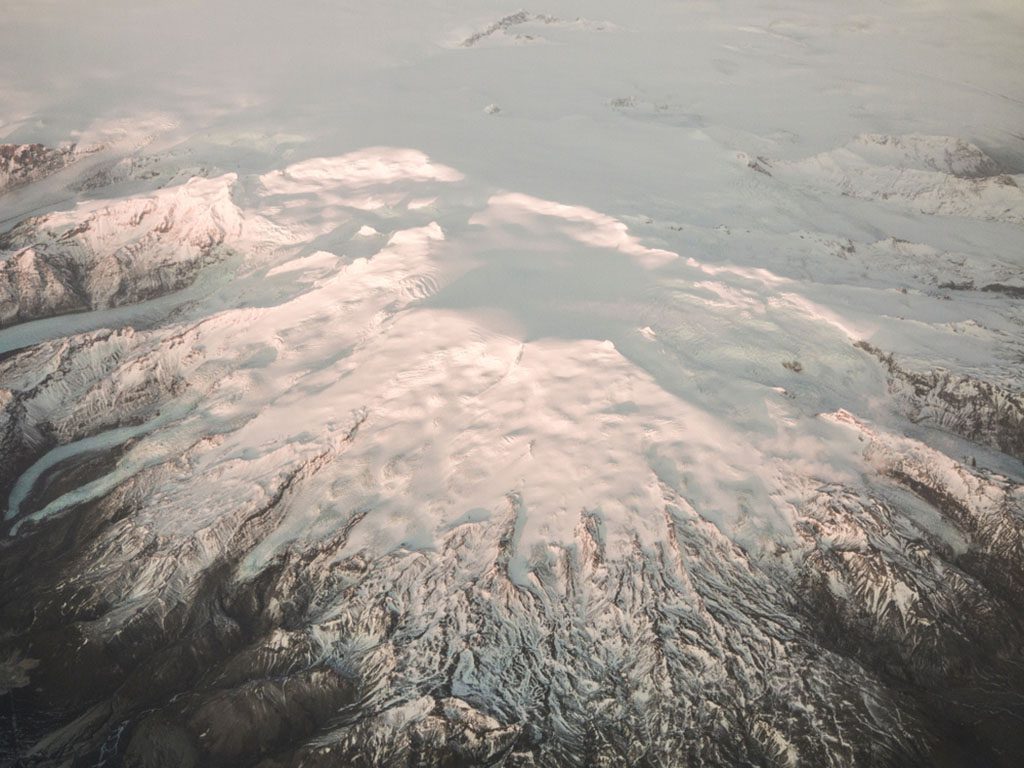
The Oraefajokull volcano is a part of Vatnajokull glacier on the south coast of Iceland. Image source: Thorir Ingvarsson/Shutterstock.com
Owing to its location on the island’s southeastern shore, Öræfajökull is not only the highest point in the nation but also the biggest active volcano in all of Iceland. The peak of the expansive mountain, which is covered in a brilliant white glacier, rises to an altitude of 2,110 meters and offers breathtaking panoramas.
Looking out over the cliffs, you can make out the distant black sand beaches of Vik. Located in Vatnakojull National Park, Öræfajökull is a favorite among hikers for its towering peak and the beautiful environment all around it.
5. Askja
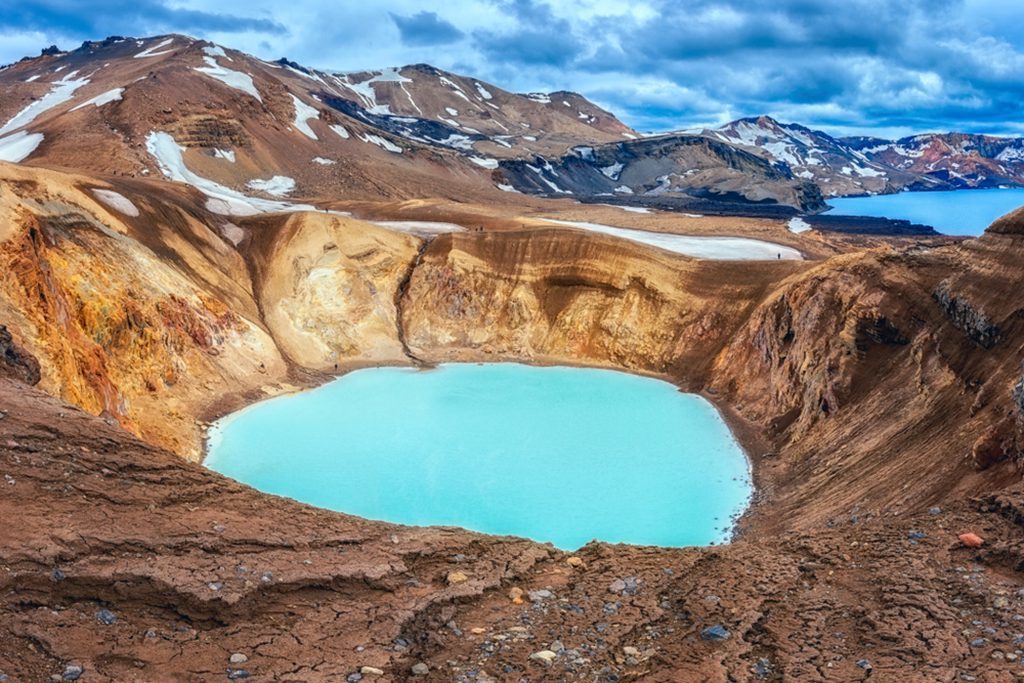
A stunning aerial shot of the Viti crater geothermal lake and Oskjuvatn lake in the Askja caldera in Iceland. Image source: Uhryn Larysa/Shutterstock.com
Askja, with its massive caldera, is located in Iceland’s forested interior, far from any roads or settlements. The only way to get there is to brave the lava fields and volcanic desert of Odadahraun. Askja is an impressive destination in and of itself, with two stunning lakes that stand out well against the otherwise foreboding environment.
In contrast to Oskjuvatn, the larger of the two lakes, which is often frozen over for most of the year, Vit is warm enough to be bathed in thanks to its bubbling hot springs. Askja’s caldera is 1,516 meters high, and the Dyngjufjoll Mountains surround it, making for a breathtaking backdrop. Many impressive canyons and gorges may be found here.
NASA brought astronauts here to train for lunar missions because of the area’s unearthly aspect.
4. Grímsvötn
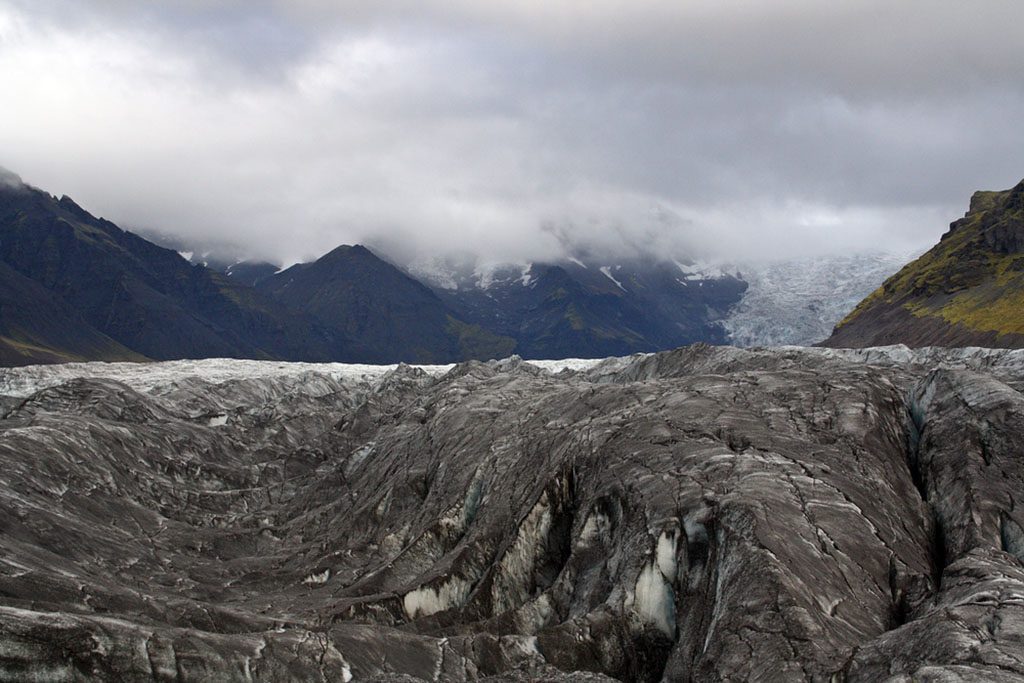
A stunning aerial shot of Vatnajökull, the largest glacier in Iceland. Image source: Angel L/Shutterstock.com
Grímsvötn , the most active and dangerous of Iceland’s volcanoes, has erupted at least 60 times in recorded history, most recently in 2011. International aviation movement was impeded for days as massive columns of smoke and ash soared into the sky. The volcano’s small size betrays its formidable eruption potential.
The reason for this is that the majority of the 1,725-meter-tall volcano is hidden by the massive Vatnakojull ice cap. Consequently, most of its craters are covered from view, with just a portion of its caldera and crater jutting above the ice. In any case, the vastness of the surrounding ice and snow in Vatnakojull National Park offers a spectacular backdrop.
3. Hekla
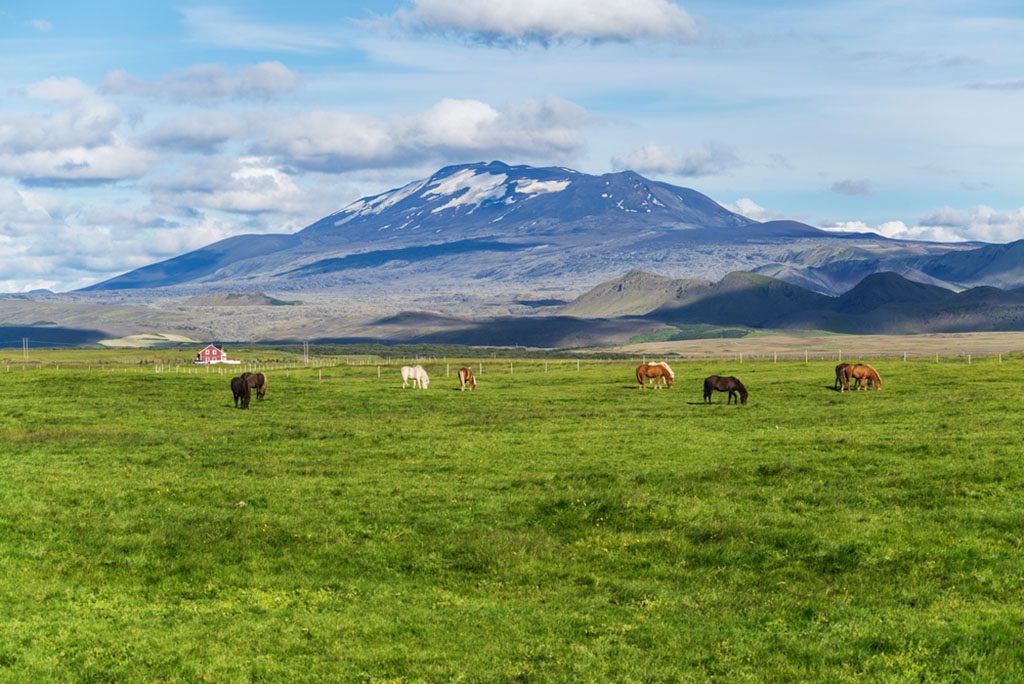
A breathtaking aerial shot of Hekla, a still active volcano north of Hella in Iceland. Image source: Tomaz Kunst/Shutterstock.com
Hekla’s regular and explosive eruptions have altered the landscape of a sizable portion of Iceland. Over the centuries and millennia, it spread lava and tephra, covering everything in its path. The volatile nature of the volcano earned it the moniker “Gateway to Hell” during the Middle Ages.
Following its last eruption in the year 2000, Hekla has become a favorite trekking destination for many people. The normal ascent time for its 1,488-meter peak is roughly four hours. The long ridge of this stratovolcano is studded with craters and is typically covered in snow and little glaciers, giving it the appearance of an upturned boat.
Hekla, one of the most well-known volcanoes in the country, towers above the ruined landscapes that surround it.
2. Katla
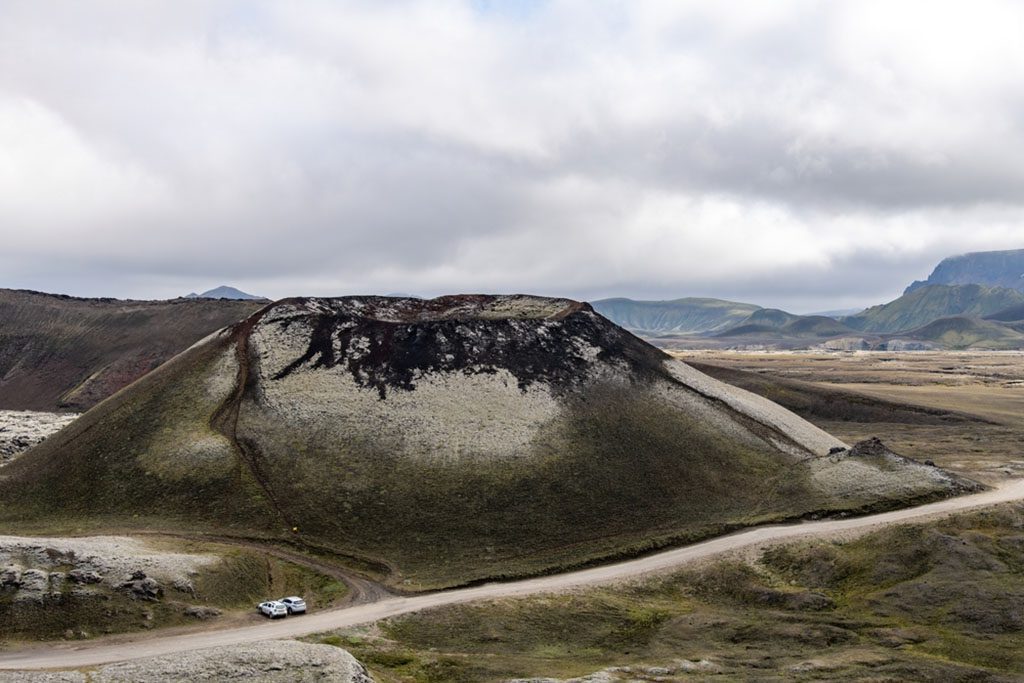
An incredible aerial shot of the volcanic plateau near the Katla volcano in Iceland. Image source: 365 Focus Photography/Shutterstock.com
In the very south of Iceland, where the sparkling Myrdalsjokull glacier may be seen, you’ll find Katla. This disguises the fact that the volcano is among the biggest and most powerful in the nation.
Katla, which stands at 1,512 meters tall, has a caldera that is 10 kilometers wide and is often covered in hundreds of meters of ice. This towers above the lunar landscapes like a tyrant. Numerous major eruptions have occurred on the massive mountain, with the most recent one being in 1918.
A lot of people think it’s geologically connected to Eyjafjallajökull because of how close the two are.
1. Eyjafjallajökull
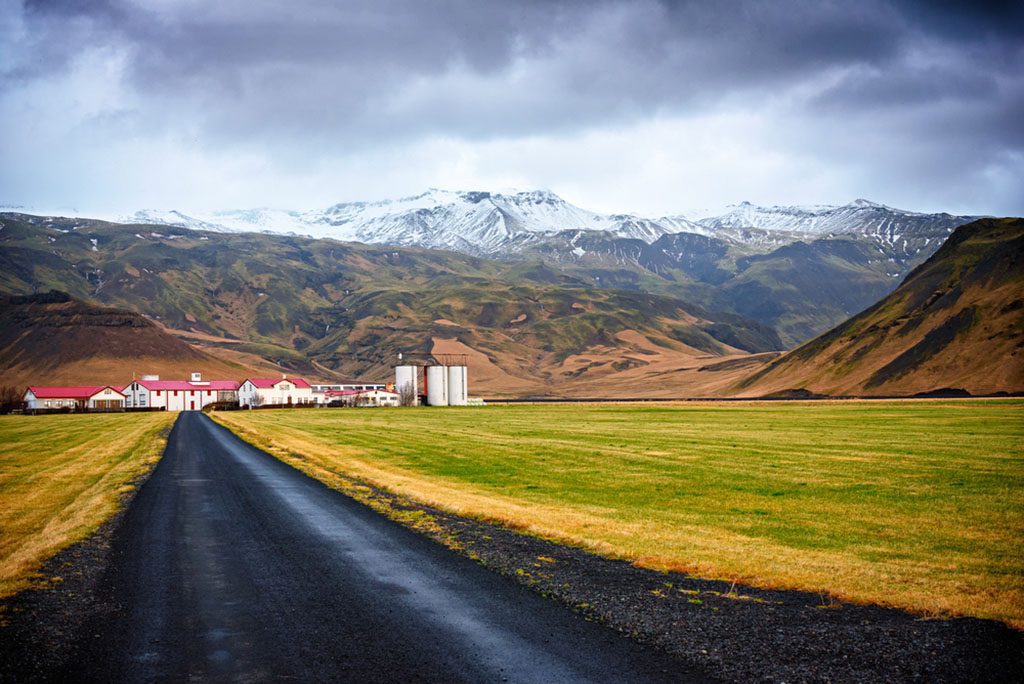
A beautiful shot of farmland framing the Eyjafjallajokull volcano in South Iceland. Image source: GrowingPanda/Shutterstock.com
Because of the havoc it inflicted on European air traffic for over a week after its 2010 eruption, Eyjafjallajökull gained instant notoriety on a global scale. The most violent and catastrophic eruption of the volcano since 1823, when records began to be kept.
Located just to the west of Katla, Eyjafjallajökull is now covered with a shimmering ice cap and is thought to be inactive. Three peaks surround the crater rim of this stratovolcano, the largest of which is Hamundur, at a height of 1,651 meters. Amazingly, the south side of the mountain used to be Iceland’s shoreline until the water receded.
Due to this, its cliffs are now home to several stunning waterfalls, the most well-known of which is Skogafoss. Eyjafjallajökull is one of Iceland’s most impressive volcanoes due to the stunning natural beauty it displays and its explosive recent past.


